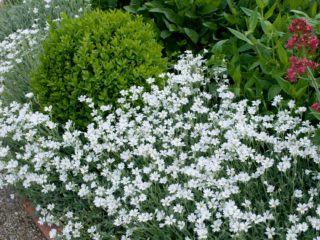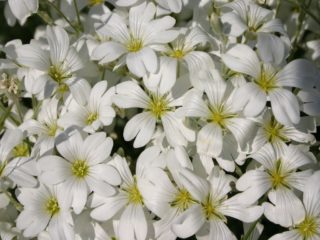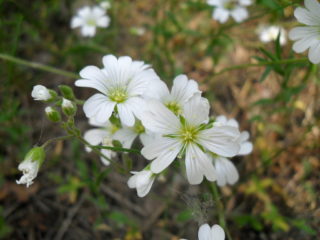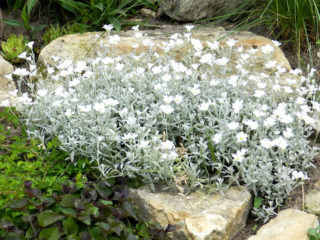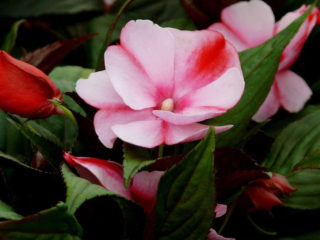Content
The silvery chrysalis outwardly resembles a delicate white cloud or snowdrift. Inhabiting meadows, mountainous and rocky areas, she creates unusually beautiful silvery-white carpets. You can also breed a culture as an ornamental plant in your own garden.
Description and characteristics
Silver chickweed (Cerastium argenteum) belongs to the group of the Clove family. This perennial is distinguished by spreading. During the period of growing green mass, the culture grows up to 15 cm.During flowering - up to 40 cm.
The stems of the plant are creeping or erect (depending on the species), rigid, with a slight leafiness, 40-45 cm long. Lignification can be observed at the rhizome. Shoots of bushes are often grouped together to form soddy trees. The leaves are elliptical and have a characteristic silver-menthol shade.
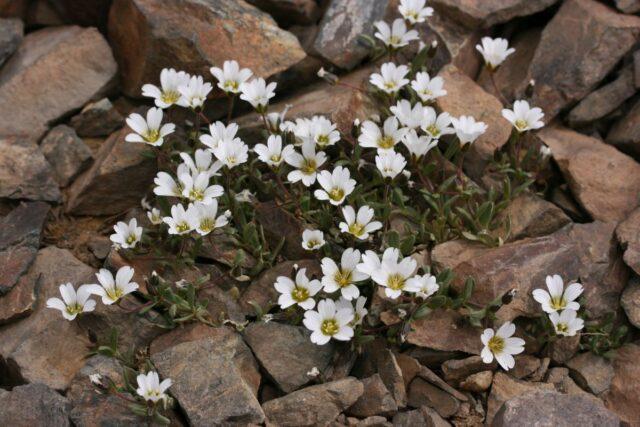
Silver chrysalis - a plant with a unique survival rate
At the top of the stem, inflorescences are concentrated, most often of white color. Each flower has five or more petals with characteristic grooves. The silvery chrysalis gives fruits, which are cylindrical-type bolls, which turn yellow when fully ripe. Each capsule contains spherical orange or brown seeds.
This culture has more than one hundred and eighty varieties. Most of them are of natural origin. The most famous are "field", "alpine", "felt". In horticulture, silvery shingle is used to create carpets. In this case, creeping, actively growing perennials are most often used.
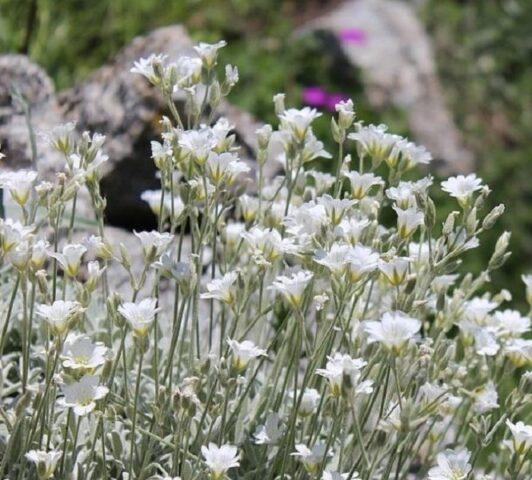
The leaves of the chickweed have a slight pubescence and a characteristic silvery-greenish color.
The plant begins to bloom in May. This period is one month. The rest of the time, the plant retains its decorative and aesthetic appearance, thanks to the small lanceolate leaves of a menthol shade.
Silver lamb is distinguished by such qualities as:
- frost resistance;
- unpretentious care;
- ease of reproduction;
- good survival rate;
- excellent immunity;
- high decorative effect.
Among the shortcomings, it is worth pointing out the poor tolerance of excess moisture, which must be taken into account when choosing a place for breeding a variety.
The following signs indicate an excess of moisture in the soil:
- reduction in leaf size;
- a change from a silver color to a greener one;
- loss of compact bushes.
The culture is actively used by landscape designers as a ground cover plant in rocky gardens, on walls, curbs, in rock gardens and rockeries. Most often it is a felt or Bieberstein chisel.
Where grows
This herbaceous culture is most often found in rocky areas, as well as dunes and meadows in temperate climates. The culture is widespread in the wild in North America, Africa, Eurasia and Australia.
Reproduction methods
The shingle is propagated in three ways: by germinating seeds, cuttings and layering. The last method is the simplest and is suitable even for novice gardeners.
With seed reproduction, nutrient soil is prepared at the end of March. Drainage, soil mixture are poured into a small container and seeds are planted.Lightly sprinkling them with earth and covering with glass or film, the container is exposed to the sunny side of the window. Watering is carried out two to three times a week. After 14-15 days, you can observe the first shoots.
The silvery chimney does not require picking. Several pieces are planted in the ground at once. The transplant is carried out in July. Typically, the culture shows high adaptability and rapid growth.
Rhizome propagation or division is carried out in the spring. For this, a young plant is divided, leaving several points of growth on each part. After that, the "delenki" are seated and watered.
Cutting is best done before or after flowering. Cut off a suitable length of the shoot and drop it in the right place, after covering it with a special cap.
Planting and caring for a silvery chimney
For planting, areas open to the sun are chosen with minimal moisture stagnation. Yaskolka perfectly tolerates the climate of the middle zone, without requiring shelter for the winter and constant watering.

Silver chisel ideal for rocky alpine slides
Despite its "love of the sun" perennial can grow in partial shade, however, as practice shows, then its flowering will be less lush. Silvery shingle is not demanding on the soil, however, if possible, it prefers sandy loam and sand. Humus or compost can be introduced into too poor soil, clay - diluted with river sand or sawdust.
A perennial can be planted both in early April (before flowering) and in August. Three to four weeks before planting the chickweed, the soil is dug up and the necessary additives are added. Then the holes are formed. The plant is planted in small groups, slightly deepening, at a distance of 20-25 cm from each other. Immediately after planting, the silvery shingle is watered with settled water.
Plant care is very simple. It is moisturized in too dry weather and periodically restrained its growth. It is enough to irrigate a perennial once every seven to eight days. A silvery laskolka is an aggressor. It easily displaces all other plants.
With thinning of leaves and shoots, the culture is fed with organic matter. This allows the plant to quickly restore its decorative effect. But perennial does not really like mineral fertilizers.
Pruning is carried out in the spring. For this, dry shoots are removed. Most often, the procedure is carried out in June. Since August, the culture has not been touched.
Silvery shingle is one of the most "long-playing" horticultural crops. However, to rejuvenate the plant, it is recommended to plant it every five to six years.
Pests and diseases
Silver chrysalis demonstrates high immunity to most diseases. When planted in a place with high moisture stagnation, the plant can infect fungal diseases. Most of the problems associated with a deterioration in appearance (a decrease in splendor) can be solved by feeding and timely pruning.
What plants is combined with
Gardeners and landscape designers often combine summer snow with dark-leaved plants such as bells and echium. In the photo of the yaskolka there is a silvery snow-white carpet, which is especially noticeable against the background of young juicy greenery.
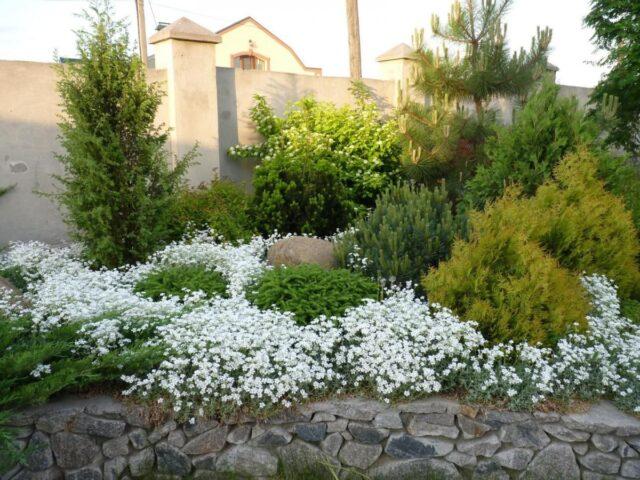
The crop is often planted alongside flower beds next to conifers.
The silvery shingle looks especially advantageous against the background of active green mass. Flowers of a blue and blue palette will make a good tandem to the perennial. Often the plant is sown next to decorative green conifers.
Bulbous ones will be the best neighbors for silvery chickweed: tulips, lilies, daffodils or irises (rhizome). But muscari or crocuses, a perennial is likely to "strangle".
Conclusion
Silvery shpolka is a unique ground cover plant that can often be found in the wild. High survival rate is the main feature of this culture, therefore, gardeners can plant it even with minimal experience in caring for flowers.


